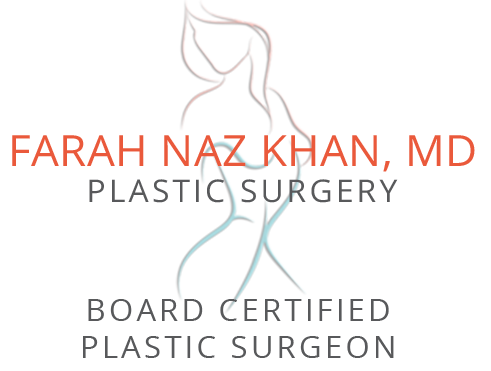 If you’ve been considering getting a tummy tuck to achieve a smoother, more toned abdomen, you may have wondered whether this procedure can also help with another common concern – stretch marks. Stretch marks are a common skin condition that many people struggle with, especially after significant weight loss or pregnancy. In this blog post, we will uncover the truth behind whether a tummy tuck can effectively remove stretch marks. Board-certified female plastic surgeon Dr. Farah Naz Khan provides tummy tuck to patients in Dallas, Plano, Texas, and surrounding communities.
If you’ve been considering getting a tummy tuck to achieve a smoother, more toned abdomen, you may have wondered whether this procedure can also help with another common concern – stretch marks. Stretch marks are a common skin condition that many people struggle with, especially after significant weight loss or pregnancy. In this blog post, we will uncover the truth behind whether a tummy tuck can effectively remove stretch marks. Board-certified female plastic surgeon Dr. Farah Naz Khan provides tummy tuck to patients in Dallas, Plano, Texas, and surrounding communities.
Understanding Stretch Marks and Their Causes
Stretch marks, scientifically termed as striae, manifest as visible lines or bands on the skin, often taking on a reddish or purplish hue initially before fading to white or silver over time. These marks are essentially scars that form when the skin’s connective tissues stretch beyond their flexibility due to rapid expansion or contraction. Such significant changes in the skin’s structure can occur for a variety of reasons, most notably during pregnancy, puberty, rapid weight gain or loss, and even from certain medical conditions or treatments that affect the skin’s elasticity.
The skin is composed of three primary layers: the epidermis (outer layer), dermis (middle layer), and hypodermis (deeper layer). Stretch marks begin to develop in the dermis when it experiences sustained pressure or stretching that disrupts its normal production of collagen and elastin—proteins that are crucial for maintaining skin’s elasticity and firmness. When the fibers in the dermis slowly break down or stretch, tiny tears emerge, leading to the characteristic appearance of stretch marks.
Furthermore, hormonal fluctuations, which can significantly affect skin’s elasticity and firmness, also play a crucial role in the development of stretch marks. For instance, during pregnancy, hormones like estrogen and relaxin can weaken the skin fibers, making it easier for stretch marks to form. Similarly, during puberty, rapid growth spurts can stretch the skin in a very short period, leading to the appearance of these marks.
Although stretch marks can affect anyone, they are more common in women, especially during and after pregnancy. Additionally, genetics can influence an individual’s susceptibility to developing stretch marks; if your family members have them, you’re more likely to have them too. While these marks are not harmful and do not cause medical problems, they can be a source of cosmetic concern for many.
What is a Tummy Tuck?
A tummy tuck, medically termed abdominoplasty, is recognized as a cosmetic surgical operation that aims at refining the appearance of the midsection. This procedure is meticulously performed by making a strategic incision across the lower abdomen, usually hidden beneath the bikini line. The essence of a tummy tuck is to address the concerns that arise from weakened or separated abdominal muscles, as well as to eliminate excess skin and fat, which diet and exercise alone may not resolve.
During the procedure, the plastic surgeon will carefully excise surplus skin and may also use liposuction to remove unwanted fat, enhancing the contour of the abdomen. The abdominal muscles, which might have been stretched or separated due to pregnancy or weight fluctuations, are then tightened and secured, restoring a more toned and defined abdominal profile. The remaining skin is then redraped to cover the newly adjusted contours, creating a smoother and firmer abdominal appearance.
It’s noteworthy that a tummy tuck goes beyond mere fat removal. It fundamentally reconstructs the abdominal wall to achieve a more aesthetically pleasing look. This is particularly beneficial for individuals who have undergone significant weight loss or women who have had multiple pregnancies and are looking to regain their pre-pregnancy body contours.
However, it’s critical to understand that abdominoplasty is a major surgical intervention that requires a recovery period. Patients should be fully aware of the post-operative care needed to ensure optimal healing and results. The procedure also leaves a permanent scar, although it is strategically placed to be as inconspicuous as possible under clothing.
By realigning and tightening the abdominal structures, a tummy tuck can significantly enhance an individual’s silhouette and potentially boost their confidence. Yet, it is paramount for anyone considering this procedure to consult with a board-certified plastic surgeon to discuss their goals, the risks involved, and the realistic outcomes they can anticipate from the surgery.
How Tummy Tucks Affect Stretch Marks
A tummy tuck primarily targets the removal of excess skin and fat from the abdominal area to create a smoother, firmer appearance. As a beneficial side effect, this procedure may also lead to the removal of stretch marks, particularly those located on the lower abdomen. This is because the skin containing these marks may be part of the excess skin that is excised during the procedure. Nevertheless, it’s crucial to understand that the primary goal of a tummy tuck is not to remove stretch marks, and its effectiveness in doing so can vary significantly based on individual circumstances.
The removal of stretch marks through a tummy tuck largely depends on their location. Marks situated below the belly button, where skin removal typically occurs, have the highest likelihood of being removed. Conversely, stretch marks on the upper abdomen or other parts of the body are unlikely to be addressed by this surgery. Additionally, the nature of the stretch marks themselves can influence the outcome. For instance, newer, red or purple marks may be situated on skin that is more likely to be removed, whereas older, faded marks may not.
It’s also important to note that while a tummy tuck can dramatically improve the overall appearance of the abdomen, the presence of stretch marks on the remaining skin post-surgery is a possibility. Individuals considering a tummy tuck for the purpose of improving the appearance of their abdomen should discuss their specific concerns, including the desire to diminish the appearance of stretch marks, with their plastic surgeon. Through this consultation, patients can gain a clearer understanding of how a tummy tuck might impact their stretch marks, allowing for a well-informed decision about undergoing the procedure.
Factors Influencing Stretch Mark Removal with Tummy Tuck
The effectiveness of a tummy tuck in removing stretch marks is not uniform across all patients, with various factors playing pivotal roles in the final outcome. Primarily, the location of the stretch marks significantly determines their likelihood of being excised during the procedure. Stretch marks positioned on the lower abdomen, which is the typical area targeted for skin removal in a tummy tuck, stand a higher chance of being removed. In contrast, stretch marks on the upper abdomen or elsewhere on the body are less likely to be affected by the surgery.
Additionally, the age and color of the stretch marks can influence the success of their removal. Newer stretch marks, characterized by a red or purple hue, often indicate that the skin is still undergoing changes, and such areas are more likely to be addressed through the removal of excess skin. On the other hand, older stretch marks, which have faded to white or silver, represent more settled scars within the skin’s deeper layers, making them more challenging to eliminate through a tummy tuck.
The individual’s skin type and overall skin elasticity also play a critical role. Those with more elastic skin may experience a more favorable reshaping of the abdominal area, which can indirectly affect the appearance of stretch marks by tightening the surrounding skin. Conversely, individuals with less elastic skin might not see as significant an improvement in the appearance of stretch marks post-surgery.
Understanding these factors is crucial for setting realistic expectations regarding the extent to which a tummy tuck can address stretch marks. It underscores the importance of a personalized consultation with a board-certified plastic surgeon, who can assess these variables and provide a tailored outlook on the potential for stretch mark removal in each unique case.
Setting Realistic Expectations and Next Steps
Embarking on the journey of undergoing a tummy tuck demands a clear understanding and realistic outlook on what the procedure can and cannot do. While the potential for a refined, smoother abdominal profile is significant, it’s essential to recognize that a tummy tuck might not be a catch-all solution for eliminating stretch marks entirely. The procedure is highly effective in addressing excess skin and tightening the abdominal area, which may include the removal of some stretch marks located on the lower abdomen. However, the persistence of stretch marks outside the surgical area should be anticipated.
Consultation with a board-certified plastic surgeon is a pivotal step in this process. During these discussions, specific concerns about stretch marks, alongside other aesthetic goals, can be thoroughly evaluated. Your surgeon can offer insights into how your individual factors—such as the location, age, and characteristics of your stretch marks, as well as your skin’s elasticity—might influence the outcomes of a tummy tuck in relation to stretch mark improvement.
Taking these next steps involves not just considering the potential physical enhancements, but also aligning your expectations with the realistic outcomes of the surgery. This alignment is crucial for satisfaction with your surgical journey and results. By being well-informed and maintaining open communication with your surgeon, you can make a decision that best fits your aesthetic goals and personal health considerations.
Contact Board Certified Dallas Female Plastic Surgeon, Dr. Farah Khan to Schedule a Consultation
To schedule a consultation with Board Certified Dallas Plastic Surgeon, Dr. Farah Khan please call 469-437-5426 or click here to contact us.
Taking patients from in and around Dallas, Plano, Fort Worth, Grapevine, Garland, Mesquite, Carrollton, Irving, Frisco, Texas and more.

